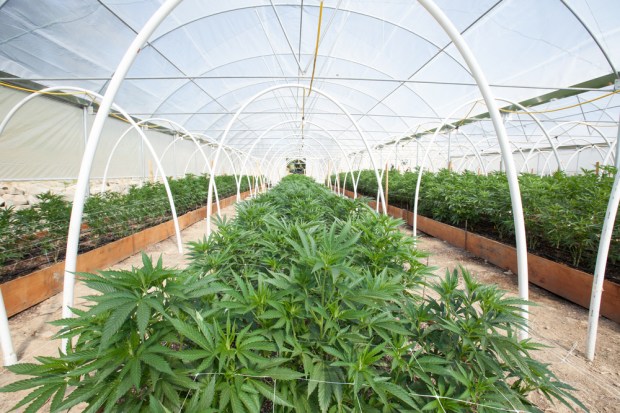Building A Delivery Market For Cannabis … Carefully

With varying shades of marijuana legality online in nearly 50 percent of all states and 61 percent of polled voters expressing support for full legalization, Americans have, by and large, turned a corner when it comes to their feelings on cannabis. There remain dogged detractors, however, particularly at the Justice Department, but the consensus is that weed is a $10 billion genie already out of the bottle — unlikely to be stuffed back in. Detractors can slow progress, of course, but stopping or reversing the trend seems unlikely.
Which means the team at Eaze is ready to innovate for the next phase of the market: when cannabis becomes just like any other consumer good.
Former CEO Keith McCarty noted in an interview with Recode, that he expects the market to go much the way the alcohol market did. In the pre-prohibition and prohibition days, there were independant moonshiners homebrewing products with crazy names like White Lightning. But in the post-prohibition world, that is almost gone, and instead there is a market largely just dominated by brands,”.
While the “Jack Daniels” of cannabis doesn’t exist presently — and probably won’t until marijuana’s Schedule I narcotic designation is dropped — consumers are increasingly looking for a more professional shopping experience as opposed to something that feels, well, like a drug deal.
Eaze’s internal data indicates that the demographics where purchase rates are increasing the fastest are among baby boomers, who are purchasing almost 20 percent more cannabis than they were a year ago, and millennial-aged women (also up 20 percent). These demographics contain the majority of the nation’s soccer moms and grandparents — and the consumers most likely to be looking for a mainstream, yet discrete, commerce experience.
Eaze exists, according to McCarty, to provide it for them.
The Logistics Marketplace Cannabis Users
While Eaze has been described as the Uber or Amazon of marijuana, the firm is hesitant to embrace either characterization. Shoppers can peruse their website for over 60 cannabis brands and almost 450 distinct products, but the company is a marketplace for the products, not for the sellers. Their dispensary partners are actual merchants: Eaze is the matchmaker that connects the customer and dispensary, but they do not themselves grow or otherwise have any cannabis of their own.
The interaction Eaze facilitates is delivery — specifically in 15 minutes or less — but unlike Uber, the driver fleet is not their own. And it can’t be: California law requires that all drivers be employees of the dispensary selling the product — with all necessary vetting activities in place. There are no Eaze drivers because they don’t have drivers. Instead, the firm considers itself the traffic director. Consumers can use the platform to select what they want, arrange delivery and from there, Eaze can transfer the order to the seller and provide the driver with logistical support in getting the goods to the buyer’s door in 15 minutes.
Expanding
Eaze entered the industry to deliver medical marijuana to patients in California, but since the market opened up to legal sales, the company is expanding its business to include recreational users.
CEO Jim Patterson says that created a few challenges. The firm has a reputation for burning through money — no pun intended — which meant expansion into the recreational delivery market required a big fundraising round: $27 million in Series B funding to be exact.
“We are a tech startup … we’re investing in growth,” Peterson told TechCrunch. “We’re investing the money now in what’s clearly going to be a very big market.”
It’s a market Eaze hopes to grow up with — particularly while it’s still legally complicated enough to keep large-scale players like Amazon away, rather than deal with the various compliance headaches incumbent in working in such a grey market. After years of building their specialty services, Patterson is confident that a larger and more profitable Eaze just might hold its own in future competition.
Plus, he noted, the marketplace is big, and there will be room for a lot of players going forward.
“The story here is that the average cannabis consumer is becoming the average American,” Patterson said.
